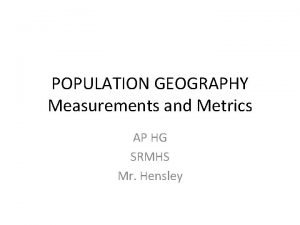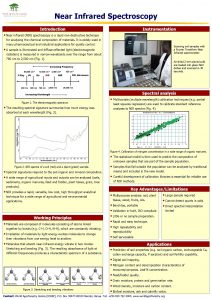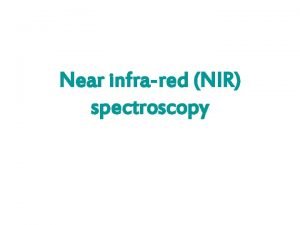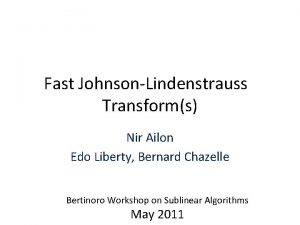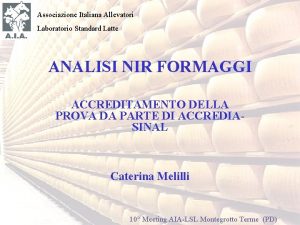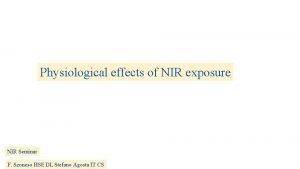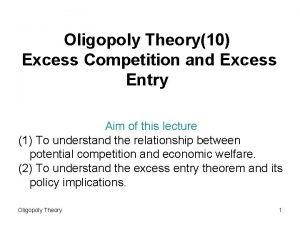Measuring the NIR Excess in Class I YSOs











- Slides: 11

Measuring the NIR Excess in Class I YSOs Ben Kidder November 12, 2015

Class I YSOs These are protostars with substantial residual molecular cores This is the first phase in a star’s life for which we can detect photospheric lines. Classified based on infrared SED slope We want to learn what’s happening in the star and the disk during this phase. Credit: Andrea Isella

SED of a Class I Source The continuum of a Class I YSO is made up of 3 well understood componants A 10, 000 K accretion shock Photosphere of the young star Thermal emission from the dusty disk

SED of a Class I Source However, there is too much continuum flux measured in the R through K bands to be explained by only these components First detected in higher mass protostars This excess, referred to as the “NIR Bump” is consistently identified in veiling studies of Class I sources Credit: Dullemond and Monnier 2010

The NIR Bump Appears to be fairly consistent with a blackbody at ~1500 K Temperature indicates that the origin of the bump lies in the inner disk, where formation of planets has begun Temperature of 1500 K brings to mind the sublimation temperature of common dust species Credit: Dullemond and Monnier 2010

Possible Origins Presence of the NIR bump has led to extensive modeling of the dust evaporation front in the inner disk 1500 K blackbody suggests the source may be an inner dust wall on the verge of evaporation Alternative explanation is emission from gas within the inner hole Credit: Dullemond and Monnier 2010

Veiling refers to the ratio of excess continuum flux to stellar photospheric flux Excess continuum causes photospheric absorption lines to become partially filled in We can measure the veiling at many location to obtain a low-resolution spectrum of the excess

Veiling and “The Bump” Want to take advantage of IGRINS’ broad spectral grasp to obtain an excess spectrum across H and K We can measure veiling by comparing EWs of absorption lines in a Class I source to those in a Class III template

Current Method Measure veiling for each photospheric line in Class I spectrum Perform weighted mean over each order of the IGRINS spectrum Multiply veiling spectrum by a flux calibrated spectrum from Spe. X library

Preliminary Results Can see some shape to the excess but little beyond that Little evidence of thermal emission from dusty disk at long end of the K band

Issues and Going Forward Some orders contain very few absorption lines while others contain so many that it is difficult to find individual EWs Uncertainty is very high for low S/N lines Will need to set lower limits on veiling for orders that are too veiled to detect lines in the Class I targets

